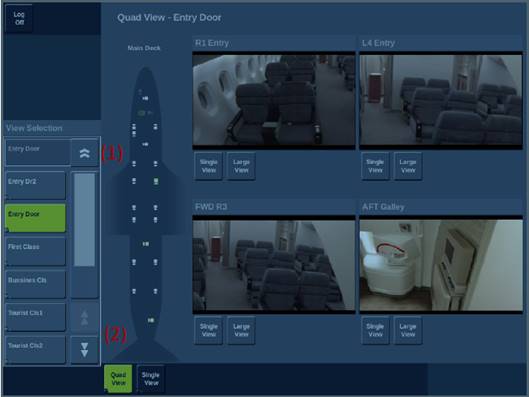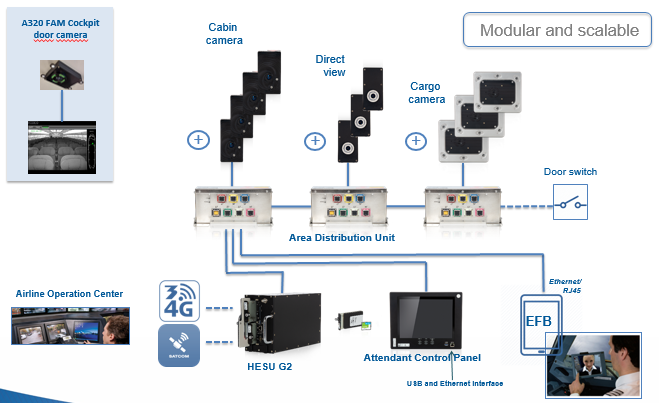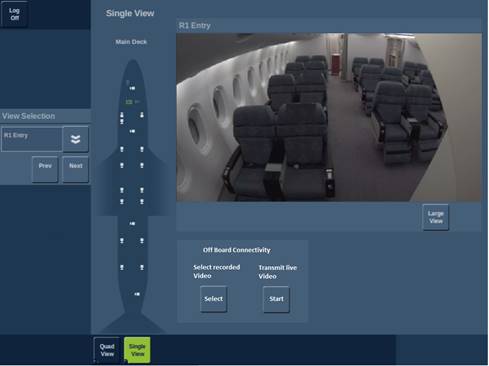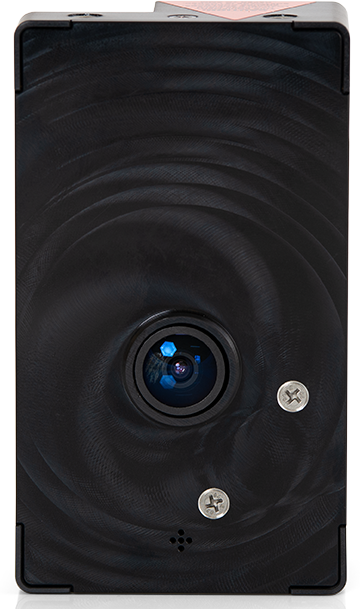KID-Systeme is pushing the boundaries of onboard video surveillance via its Cargo Cam and Cabin Cam products, turning them into a fully connected surveillance system, including the ability to upload video live, after the fact, or both. Not only does the addition of connectivity expand the existing safety, security and anti-theft benefits of a camera-equipped cabin, but it also opens the door to additional benefits: real-time transmission of medical data in the event of passenger illness or injury, or assistance in dealing with disruptive passengers.
KID’s Universal Video Surveillance System, product manager Joachim Reuter tells Runway Girl Network, “is a universal and modular, aircraft manufacturer and aircraft program independent video surveillance system. The UVSS improves flight crew protection, flight deck safety and cargo bay security for commercial flight crews around the world,” by allowing “crew, security staff and the airline operations center to monitor all areas of the aircraft and record the audio and video data for archiving and later analysis.”

Monitoring the cabin environment — on the plane or on the ground — can be a game changer. Image: KID-Systeme
That monitoring can span the aircraft from nose to tail, including flight deck doors, galleys, cabins, passenger areas and the cargo spaces, and KID is looking to address “major challenges the airlines are facing … unruly passengers leading to flight diversions and theft in cabin and cargo.”
There are clear benefits to adding that kind of monitoring, but even more interesting is ELSTRAF — the Event and Live Stream TRansmit Function — that enables the system to send snapshots, live video and recorded video to the airline’s operations centre.
“This enables the airline operations centre to assess the criticality of an event in the cabin and organize emergency response actions and support from ground,” Reuter explains, highlighting that there are security and anti-theft applications even before the aircraft takes off. “On ground the ELSTRAF function provides a live view into the cabin and cargo compartment thus enabling remote video surveillance from the airline operations centre.”
Today, this function is available for Boeing 777 linefit and retrofit and configured to use Panasonic’s external connectivity system. “This function can be configured to work over L-band, ATG-1 and/or Ku-band connections,” Reuter confirms. “The higher the bandwidth, the faster the video transmission. The system can can share the bandwidth with passenger applications. Normally a certain bandwidth is reserved not to get in conflict with the bandwidth needed for passenger connectivity.”

The full system links together to save data on the aircraft and transmit it to the ground. Image: KID-Systeme
The advent of fully broadband inflight connectivity also provides an additional benefit for airlines choosing a video surveillance system such as this: the ability to upload images and video in medical situations to enable emergency responders in the air — whether crew or medical professionals among the aircraft’s passengers — to transmit real-time visuals to the ground-based medical assistance centre the airline uses.
This livestreaming benefit can also help to reduce, prevent and deal with disruptive passengers on board, Reuter says. “Unruly passenger incidents include violence against crew and other passengers, harassment, verbal abuse, smoking, failure to follow safety instructions and other forms of riotous behavior. Although such acts are committed by a tiny minority of passengers, they have a disproportionate impact. They create inconvenience, threaten the safety and security of other passengers and crew, and lead to significant operational disruption and costs for airlines.”
These ‘exceptional cabin events’ are becoming more common, as RGN continues to report. IATA and civil aviation authority statistics cited by KID suggest that the 2017 rate of disruptive incidents was just over 1 in every 1000 flights, with 10 percent of all incidents escalating beyond level 1 verbal incidents to physical aggression or damage to the aircraft. A further four percent were levels 3 (life-threatening behavior) or 4, which IATA says would include “attempted or actual breach of flight deck security, act of sabotage and credible threat of unlawful seizure of the aircraft.”
KID-Systeme, for its part, says UVSS is the only system on the market combining surveillance and connectivity to help deter, monitor and resolve these problems — and the others with which camera-equipped cabins can also assist.
Related Articles:
- IFE camera use cases explored after passenger tweet goes viral
- Thales on how AI is making small but meaningful impacts in aviation
- Seatback immigration? One-on-one with biometrics firm Tascent
- Lufthansa on wellness applications – what about the liability?
- GDPR compliance and infosec top of mind as Thales personalizes IFEC
- KID-Systeme offers camera solution for cabin, cargo safety
- Press Release: GEE, KID to supply integrated streaming for Saudia












